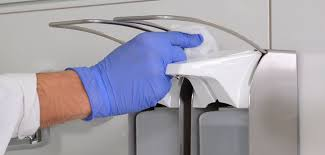Hospital pipes are the safest hiding place for bacteria, they can even fail rigorous cleaning
- bySherya
- 14 Feb, 2025

Cleaning of the drain pipes of the hospital is extremely important so that bacteria do not get a chance to make their home, but sometimes all kinds of arrangements are not enough .

Bacteria in hospital drains: Despite thorough cleaning in hospitals, dangerous bacteria remain hidden in the sink pipes. According to a research, this problem is playing a major role in increasing "healthcare-associated infections" (HAI). HAIs spread more among patients whose immunity is weak. Apart from this, this problem becomes more serious due to lack of proper cleanliness rules in some hospitals.
Cleaning costs a lot.
According to research, such infections have become a big problem worldwide and about 6 percent of the total budget of hospitals is spent on this. Excessive use of antibiotics also increases this problem, because due to this some species of bacteria become resistant to medicines. When these resistant genes are transferred from one bacteria to another, the chances of new types of diseases arising increase.
Even strict cleaning is not enough
Professor Margarita Gomila of the University of the Balearic Islands in Spain said that the population of bacteria in the pipes of hospital sinks keeps changing over time, no matter how strict the cleaning rules are. This study was published in the journal "Frontiers in Microbiology". It highlights that controlling the growth of bacteria in pipes and preventing the arrival of new bacteria in such places can be a global problem. These are the places where disinfectants have less effect.
67 types of bacteria found
Research revealed that sinks and their pipes or drains are regularly cleaned with bleach, chemicals and steam. This cleaning campaign continues at an interval of a few days. Apart from this, pipes are hyperchlorinated at low temperature once a year. Despite this, scientists found a total of 67 types of bacteria in the pipes.
Where were more bacteria found?
The highest number of bacteria were found in general medicine and ICU, while the lowest were found in the microbiology lab. The newly opened ward of the ICU also had a high diversity of bacteria. Mainly bacteria called Stenotrophomonas and Pseudomonas aeruginosa were found in it, which can spread diseases like pneumonia and sepsis.
In addition, the researchers also found 16 other types of bacteria from the Pseudomonas species, which the World Health Organization has described as one of the biggest antibiotic resistance threats to humans. These bacteria were found especially high in the short-stay wards of the hospital.
Other dangerous bacteria were also found repeatedly in different wards. Researchers warned that hospital sink pipes can become ideal places for bacteria to hide and grow. These may include some bacteria that have the ability to avoid antibiotics and spread new infections. Therefore, it is important to know where these bacteria come from and how they reach patients, so that their spread can be stopped.




